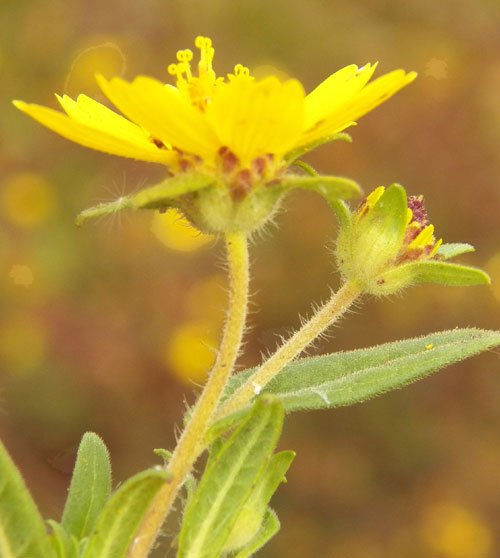Aspilia mossambicensis (?)

Brownish-red pales are visible just behind the phyllaries. In this view, several bifurcated stigmas can be seen emerged from the central disc florets. Inflorescence diameter is about 3 cm. Eldoret, Kenya. January 2012.
This composite was found growing among withered cornstalks in January after the crop had been harvested. Some plants are almost 2 meters tall and are branched into flexible, herbaceous stems. Cattle left to forage generally ignored this plant in favor of more palatable weeds. Some Aspilia are reported to contain toxic and or medicinally active compounds.

- Ray Flowers: The ray flowers are large, yellow and showy. The tips are conspicuously toothed.
- Disc Flowers: The many disc flowers are brownish-yellow.
- Phyllaries: Four to six broad phyllaries enclose the head florets. Just inside the phyllaries several papery pales with a maroon tint are visible.
- Pappus: not evident.
- Leaves: The simple leaves are lance-shaped with a sandy texture due to stiff pubescence. The margins are obscurely toothed.